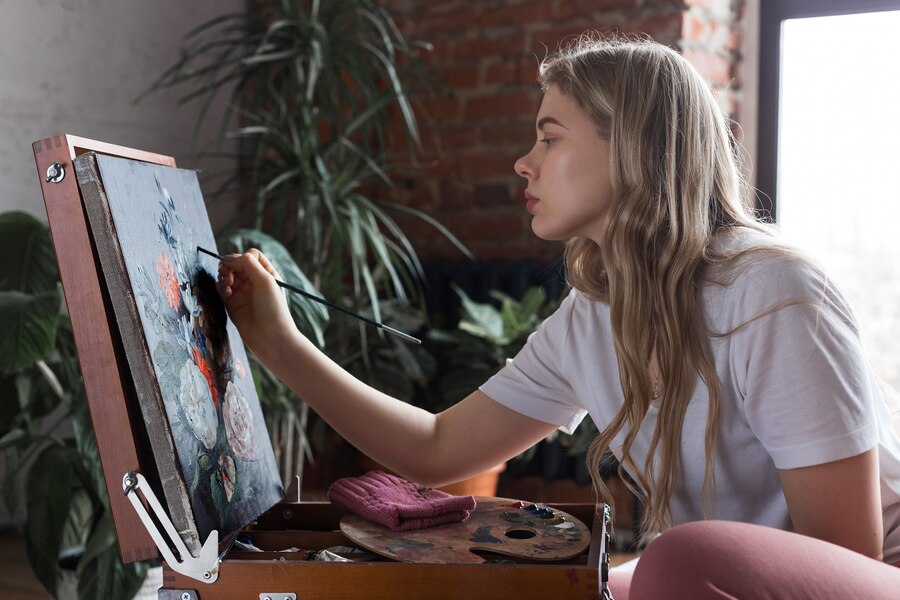
Are you ready to unlock the secrets of creating stunning portrait paintings with pastels? This complete guide will walk you through everything from essential supplies to advanced techniques. Moreover, you’ll discover how to capture the essence of your subject with this versatile medium.
Why Pastels Are Perfect for Portrait Painting
Pastels offer unique advantages for portrait artists. Firstly, they blend the line between drawing and painting, allowing for expressive mark-making. Additionally, their vibrant pigments create lifelike skin tones that maintain their brilliance over time. Because pastels require no drying time, you can work continuously without interruption.
Essential Pastel Supplies for Portrait Artists
Before diving into techniques, let’s cover the must-have materials:
Selecting Quality Pastels
The difference between student and professional pastels is significant. Professional pastels contain higher pigment concentrations and offer better blending capabilities. Therefore, invest in a basic set of soft pastels with a range of skin tones. Brands like Rembrandt, Sennelier, and Unison are excellent choices for beginners and professionals alike.
Choosing the Right Paper
Pastel paper must have adequate tooth (texture) to hold multiple layers. Subsequently, consider papers like Canson Mi-Teintes, Pastelmat, or Uart sanded paper. Furthermore, select mid-toned papers rather than white to create depth in your portraits.
Fundamental Techniques for Pastel Portraits
Now, let’s explore the essential techniques you’ll need:
Layering and Blending Methods
Start with light pressure, gradually building up layers. Then, use your fingers, blending stumps, or soft brushes to smooth transitions. Meanwhile, leave some areas unblended for textural interest. Consequently, your portraits will have both softness and definition.
Creating Realistic Skin Tones
Skin is never one flat color. In fact, it contains various undertones that change with lighting. Hence, observe your subject carefully, noting the cool blues under the eyes or warm reds in the cheeks. Above all, resist using pure white for highlights—instead, opt for pale yellows or pinks.
Common Challenges and Solutions
Avoiding Muddy Colors
Overblending is a common mistake. Instead of blending everything, preserve some pure color areas. Similarly, work from dark to light, adding your lightest values last to maintain vibrancy.
Fixing Mistakes
Unlike other mediums, pastels are forgiving. You can lift color with tape, brush away excess with a soft brush, or layer over mistakes. However, don’t overwork one area—sometimes starting fresh yields better results.
Advanced Portrait Techniques
Capturing Expression Through Eyes
The eyes are indeed the window to the soul. Therefore, pay special attention to the catch lights, iris details, and surrounding shadows. In addition, subtle variations in eyelid pressure create character and emotion.
Mastering Hair Techniques
Rather than drawing individual strands, focus on hair masses and directional movement. Afterward, add selected individual strands for realism. Moreover, vary your pressure to capture both the softness and shine of hair.
Preserving Your Pastel Portraits
Fixative can alter colors, so use it sparingly. Alternatively, frame your artwork under glass with proper spacing. As a result, your portraits will remain vibrant for generations. Most importantly, store unframed works in acid-free folders to prevent smudging.
Taking Your Skills to the Next Level
Study the Masters
Analyze works by pastel masters like Mary Cassatt, Edgar Degas, and contemporary artists like Sally Strand. Then, note their color choices, mark-making, and composition techniques.
Regular Practice Exercises
Commit to quick daily sketches focusing on specific features. Additionally, practice mixing colors on scrap paper before applying them to your portrait. Eventually, these habits will dramatically improve your results.
Conclusion
Mastering pastel portraits takes time and dedication. Nevertheless, the rewards are worth the effort. By combining technical skills with artistic expression, you’ll create compelling portraits that capture not just likeness, but personality. After all, a successful portrait reveals something deeper about your subject.
Remember to embrace the unique qualities of pastels—their immediate color impact, tactile application, and luminous finish. Ultimately, your artistic voice will emerge through consistent practice and experimentation.
